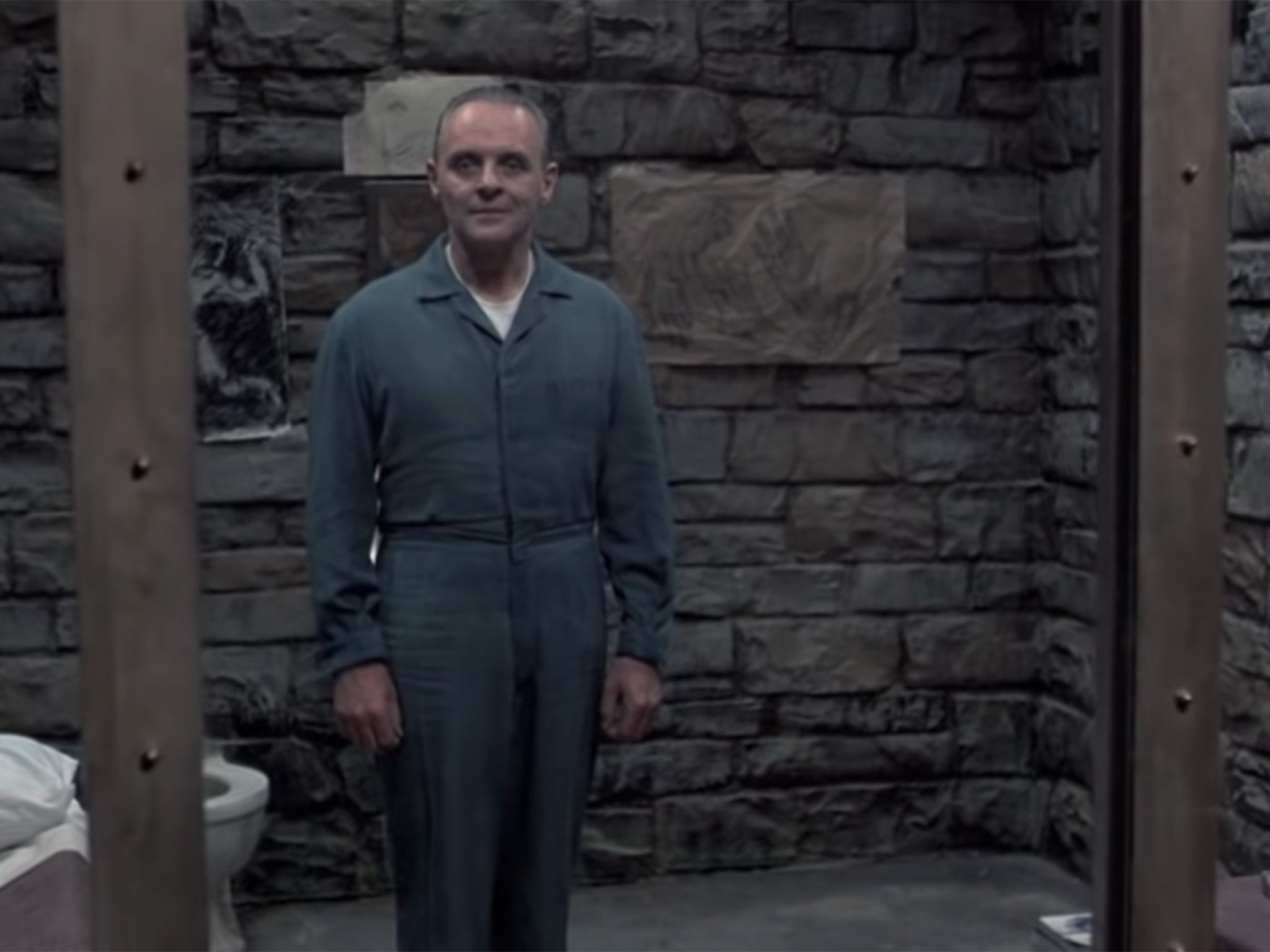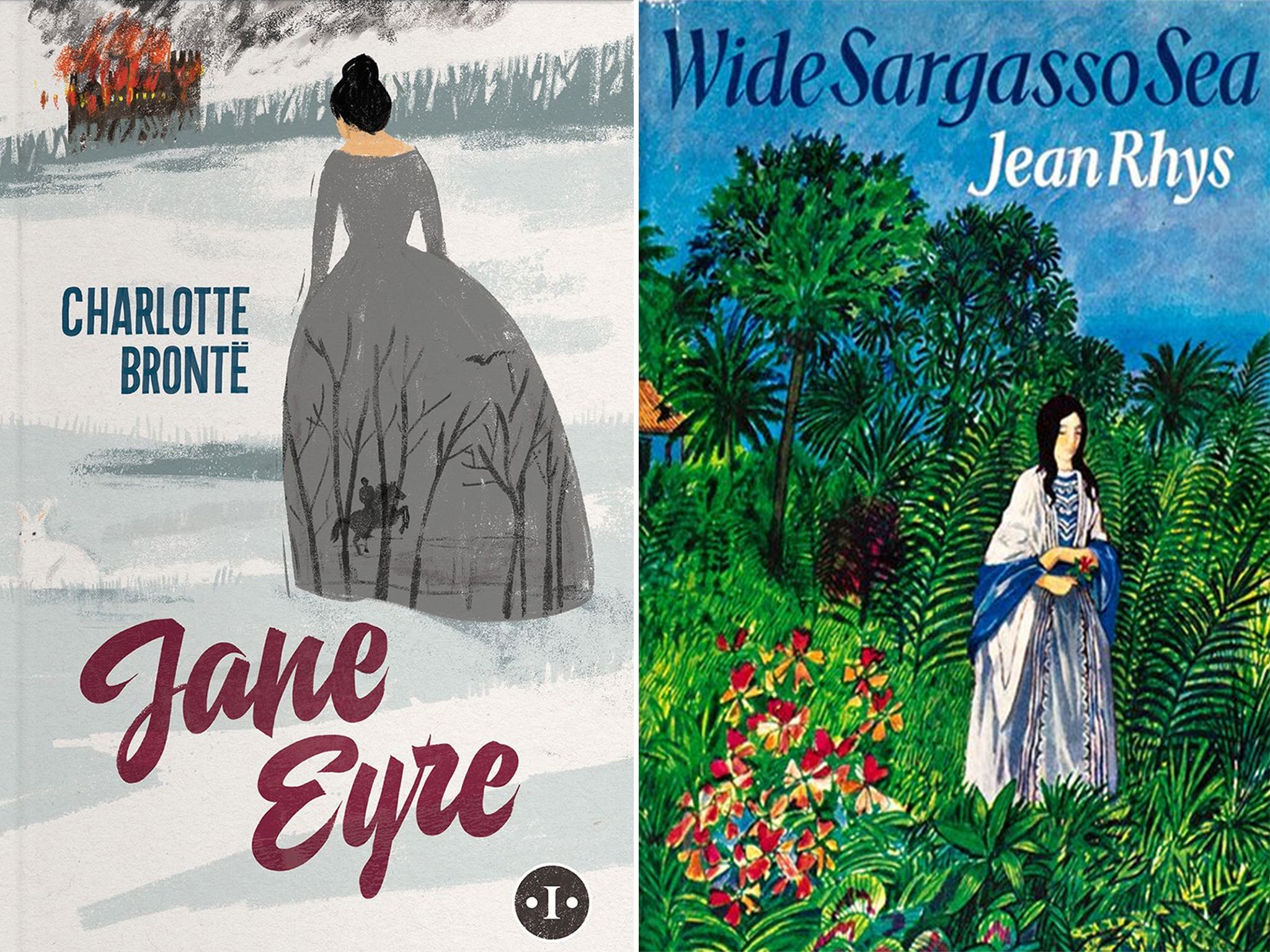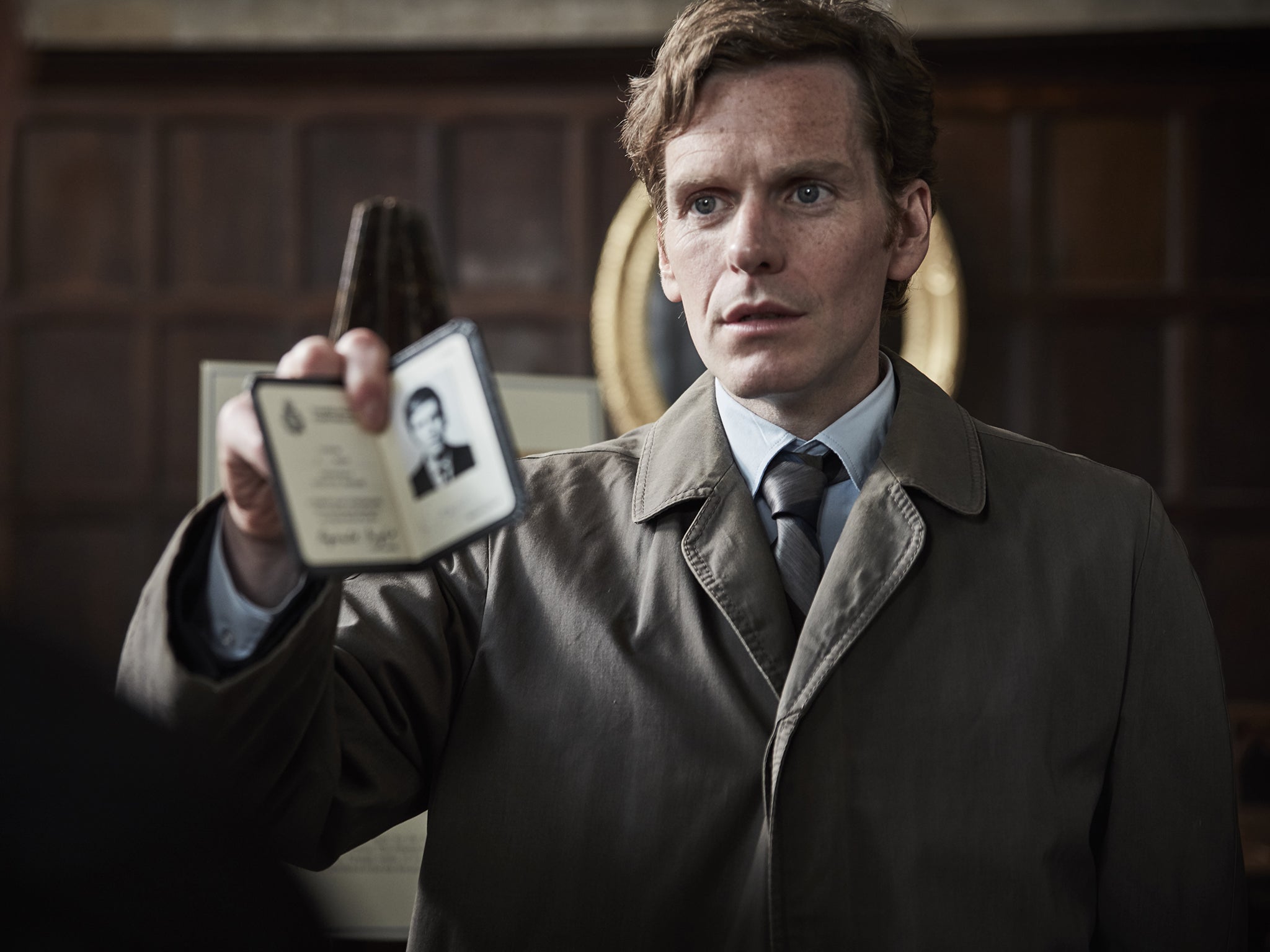From ‘Endeavour’ to the resurrection of Nurse Ratched: Why we love a prequel
With the success of Netflix’s resurrection of Nurse Ratched comes a question almost as old as Hollywood itself: why are we so obsessed with the story before a story? David Barnett investigates


Nurse Ratched appears on the very first page of Ken Kesey's 1962 novel One Flew Over the Cuckoo’s Nest, and her presence looms large over both the rest of the book and the 1975 film adaptation.
She is the bête noire of Randle Patrick McMurphy, rebellious inmate of the Salem State Hospital (played so memorably by Jack Nicholson in the movie), the head nurse who rules the mental hospital with an iron fist covered not so much by a velvet glove, but vibrant nail polish.
Known to the inmates as Big Nurse, Ratched — given the name Mildred in the film — is introduced in Kesey’s novel through the narrator “Chief” Bromden thus: “Her face is smooth, calculated, and precision-made, like an expensive baby doll, skin like flesh-coloured enamel, blend of white and cream and baby-blue eyes, small nose, pink little nostrils — everything working together except the colour on her lips and fingernails, and the size of her bosom. A mistake was made somehow in manufacturing, putting those big, womanly breasts on what would otherwise have been a perfect work, and you can see how bitter she is about it.”
Throughout the story, Ratched tries to maintain her tyrannical rule in the face of McMurphy’s rabble-rousing attempts to inject some life and fire back into the the half-Native American Bromden and the rest of the listless residents of the hospital. Spoiler alert ahead: she triumphs, by having McMurphy lobotomised. But it’s a hollow victory, for his legacy cannot be wiped away as easy as his mind, and Ratched’s control over the ward begins to slip even as McMurphy drools into his cereal.
All we really know about Ratched (played by Louise Fletcher in the movie) prior to the events of One Flew Over the Cuckoo’s Nest is that she was an army nurse during the Second World War. We never really know, in depth, what made her the way she is. Until now, of course, with the launch of the series Ratched on the streaming service Netflix.
Ratched, from showrunners Ryan Murphy and Ian Brennan and starring Murphy’s American Horror Story lead Sarah Paulson in the titular role, follows the early life of Big Nurse, beginning in 1947 after her army nurse years. She takes a job at a psychiatric hospital where, according to Netflix’s press, “new and unsettling experiments have begun on the human mind” and we are given an insight into the “darkness that has long been smouldering within” Mildred Ratched’s stylish exterior, revealing ultimately that “true monsters are made, not born”.
While having the aesthetic of American Horror Story and setting the scene for One Flew Over the Cuckoo’s Nest, the show is very much its own thing, and is something of a triumph in adding meat to the bones of what we know about Big Nurse.
It does, we seem, love a prequel, and if it explores the darker side of characters that have been made more famous in movies, books or TV shows, then all the better. Some of the most successful recent prequels have delved into the pasts of the villains, rather than the heroes of stories. Take The Silence of the Lambs; we know pretty much all we need to about rookie FBI agent Clarice Starling from her chats with caged serial killer Hannibal Lecter; Lecter wants to know what makes her tick in payment for his help, and therefore so do we. But more interesting is Lecter himself; how did he get to be where he is, what made this cultured, intelligent, quietly sophisticated man into the sort of monster who devours a census taker with a good chianti? Step forward the series Hannibal, which debuted in 2013, and attempted to answer those questions.
Similarly, the true “hero” of Alfred Hitchcock’s 1960 movie Psycho is actually its villain, Norman Bates. We know what tipped Bates over the edge, thanks to the info-dump denouement; consumed by guilt after murdering his mother and her lover, Norman recreates his mother’s personality within his, and whenever he gets close to a woman the jealous mother surfaces and kills her. But what was their relationship that led to this unholy communion of mother and son? Well, five seasons of Bates Motel helped fill in the blanks.
Gotham allows us a peek into the formative years of some of Batman’s biggest enemies, while Pennyworth lifts the lid on the earlier escapades of the Caped Crusader’s butler Alfred, revealing that before his years dressing Bruce Wayne’s battle wounds and serving up Twinkies to Robin, the Boy Wonder, he was a former SAS soldier who set up a private security company in 1960s London. Indeed, it’s probably thanks to the comic side of pop culture that prequels are such a current trend.

“Detective Comics didn't run the story of How Bruce Wayne Came to be the Batman until a few stories had established his masked mystery man persona,” says film critic and writer Kim Newman. “I think the current wave of prequels was probably kicked off by Smallville, which was itself a variation on Superboy – which started in the comics years after Superman became a hit.”
But the idea of going back to explore characters’ earlier lives dates back even further. Newman adds: “This sort of go-back-and-tell-the-beginning-of-the-story idea has been around for a long time – to take a forgotten franchise at random, Russell Thorndike's Doctor Syn (1915) introduces pirate/vicar Doctor Syn in his last adventure, ending with his death, then Thorndike went back and wrote a whole bunch of novels covering his whole career, including a kind of origin story.
“Arthur Conan Doyle was well into the series before he had Sherlock Holmes talk about his first cases. On the big screen, I suspect Casino Royale, as much a reboot as a prequel, established the form. And the novel and show Wicked also casts a big shadow.”
One of the biggest and most controversial films of recent months — Joker — precisely fits the mould, and definitely feeds our desire to see what brought our favourite bad guys to the point where they are committing their nefarious deeds. But that can be a double-edged sword. By putting someone as psychotic as the Joker in a lead role, can we do anything but sympathise with him?
Generally, there’s always an element of foreshadowing, and quite a few modern prequels work like fan fiction — filling in supposed blanks in well-established characters whether we really needed them or not
“There's a recent glut of these – Joker is pretty prominent – which might skew towards that tendency to see characters formerly depicted as monstrous as emblematic antiheroes,” says Newman. “Previous 'square' generations frowned on these folk, but we recognise a kinship with them. There's a risk that this tends to demystify or limit villains when we need them to be antagonists again — interesting as Joker is, that version of the character seems unlikely to last five minutes in a battle with Batman.
Is Newman a fan of the backstory prequel? “I call things on a case-by-case basis,” he says. “To my mind, the best prequels cast established works in a different light — Jean Rhys' Wide Sargasso Sea (1966 prequel to Charlotte Bronte’s Jane Eyre) gives the backstory of Mrs Rochester but works as a critique of Jane Eyre as much as a homage to it.
“Generally, there’s always an element of foreshadowing, and quite a few modern prequels work like fan fiction — filling in supposed blanks in well-established characters whether we really needed them or not — Young Sherlock Holmes is full of bits explaining why the adult Holmes wears that hat or is celibate. One approach is not to let on that it's a prequel — there's a neat trick in Chris Priestley's novel Mr Creecher, which is a sequel to Frankenstein, where you're misled as to which other famous 19th-century character is being given a prequel story … when the penny drops, the book gets interestingly darker.”
With Ratched, we’re admittedly looking at a character that is fairly broadly sketched in both the book and the film. We don’t really know a great deal about her, and see her through other people’s eyes. Exploring the earlier life of a much more filled-out and beloved character brings with it a different set of challenges.
Inspector Morse is something of a British institution. Based on the novels by Colin Dexter, the series comprised 33 two-hour films broadcast by ITV between 1987 and 2000, with the late, great John Thaw bringing to life the irascible detective with a passion for classical music, real ale and classic cars who investigates murders among the dreaming spires of Oxford. Both the books and the TV adaptations were a finite commodity; Morse dies of a heart attack at the end of his final case, detailed in The Remorseful Day. But when you have a show voted the best crime series of all time by readers of the Radio Times in 2018, it’s hard to let go. So in 2012 we had Endeavour, detailing the life of the young Morse, played by Shaun Evans.

Endeavour was created and written by Russell Lewis, who had worked on Morse, and originally the intention was to create a single movie to mark the 25th anniversary of the original show, looking back at his first case as a detective in Oxford. But it soon became apparent the idea had far more legs than a one-off.
The challenge for Lewis and his team was to be true to the character that was loved by viewers, but be able to tell new stories and offer new revelations. He says: “It was a huge privilege to be allowed to develop Colin Dexter’s character and the world he’d created, and also an enormous responsibility for all of the team, as we didn’t want to let anyone down, or profane a pretty sacred television icon.
“We had a little bit of leeway, insofar as we were depicting a much younger Morse, and some of the things which would become immediately recognisable as Morse characteristics — his irascibility, for example — felt like things that weren’t yet baked in, and that, when we went to series, we could allow to percolate and develop at a very believable pace. The thousand natural shocks and heartaches. We wanted to build those things slowly, so the audience might understand each step on the road to the man he eventually becomes.”
What is definitely a huge boon when working on a prequel is for the creative team to actually be fans of the property they’re developing. And that was certainly the case for Lewis and those working on Endeavour.
“We were all huge fans to start with and had probably seen every Morse film and read every novel, and ‘About’ and ‘Making of’ in existence,” he says. “For some people it’s Star Trek or Star Wars — with us it was Morse. So – I think there were things we wanted to draw on, certain bits of lore — his relationship with Susan Fallon – Wendy, in the novels – so we did a bit of retconning there. His family life – his uneasy relationship with his father, stepmother and - much more loving relationship with his stepsister. All those things were wonderful jumping-off points for emotional beats and stories for him.”

While TV and film adaptations can sometimes gloss over things in the source novels, which can often contain a lot of information about characters that never makes it to the screen, that wasn’t the case with Inspector Morse; for one, the two-hour format allowed the makers to fully adapt the stories, and secondly, Colin Dexter – who died in 2017 – hadn’t stuffed his novels with lots of back story about Morse.
Lewis says: “He’d written a Christmas story about his days as an undergraduate which appeared in a national newspaper one festive period, but Colin had him at uni a little later than seemed reasonable for him to have made chief inspector by the time the first novel arrived. Colin himself allowed a certain amount of fog of war to cloud the timeline, and I think rather enjoyed being a slightly unreliable narrator. We, of course, were celebrating his TV incarnation, and so I based his age upon that of our much missed inspiration John Thaw. And that landed us in the middle of the 1960s as a credible point for him to have just made detective constable.”
The key thing is not doing anything in a prequel which materially changes the character that we know — what Lewis calls “the prime directive”.
“It’s our one cardinal rule,” he says. “There are stories we’d love to do — places we’d love to take him — but we deny ourselves the opportunity because it really would compromise later continuity. There are many things we don’t know about him — but the things we do know are sacrosanct, inviolable.
“And yet within those confines, we’ve found quite a bit of wriggle room. His drinking is the prime example, I suppose. We know where that road ends — so the very first thing we had him say in the one-off film which began it all was, ‘I don’t drink. You know that.’ And that was pretty much the first thought that came to me. It felt surprising, but possible that there was a period of conscious abstinence in his life — that when we first find him, he has turned away from that darkness, and the pull of that slow poison that will number his days.
“We picked up on it in the last film of the first series — his half-sister Gwen is surprised that he is back on the sauce. But I think, as a marker, and a signal to audience that we might take them places and show them sides of his character that they might not expect, it served pretty effective notice.”
Just as Kesey’s novel opens with a display of Nurse Ratched’s hold over the hospital, it ends with her tyranny being eroded, in the aftermath of her pyrrhic victory over McMurphy. Chief Bromden notes in the closing chapter: “She tried to get her ward back into shape, but it was difficult with McMurphy’s present still tromping up and down the halls and laughing out loud in the meetings and singing in the latrines. She couldn’t rule with her old power any more.”
One Flew Over the Cuckoo’s Nest is a complete story, with satisfactory endings for all the characters. But as Ratched and the current trend for prequels shows, just because a story is finished doesn’t mean it’s over… we just have to go back to the beginning to find out more. And we seem to have a very strong appetite for that.
“I think that’s perfectly understandable,” says Lewis. “We become fond of characters from books and television and movies. Their presence – if it’s a long running show or series of books say – becomes a comfort. Like a favourite bedtime story. And when such things end, sometimes it’s hard to quite let go of them. We’ve dealt with some of his unhappy affairs of the heart — and when those things end there’s always a wish for one more word, one more look, a last backward glance. And it’s the same when a show ends — there’s always a wish for one more story.”




Join our commenting forum
Join thought-provoking conversations, follow other Independent readers and see their replies
Comments